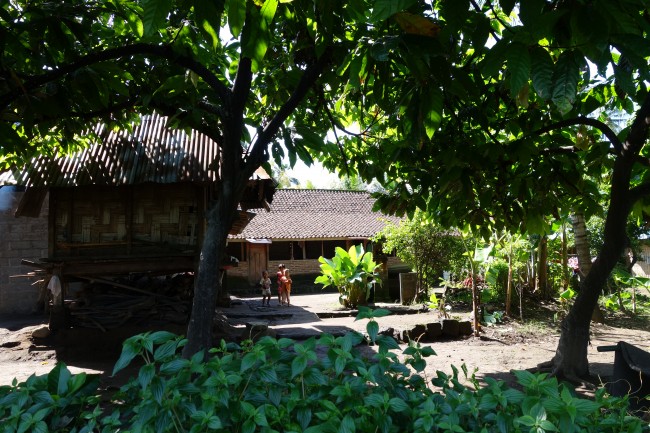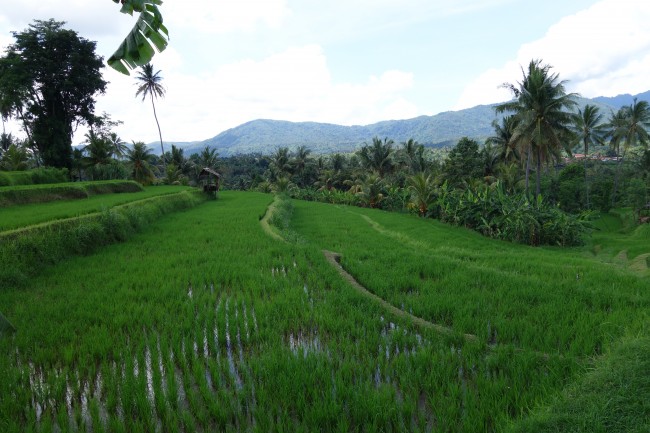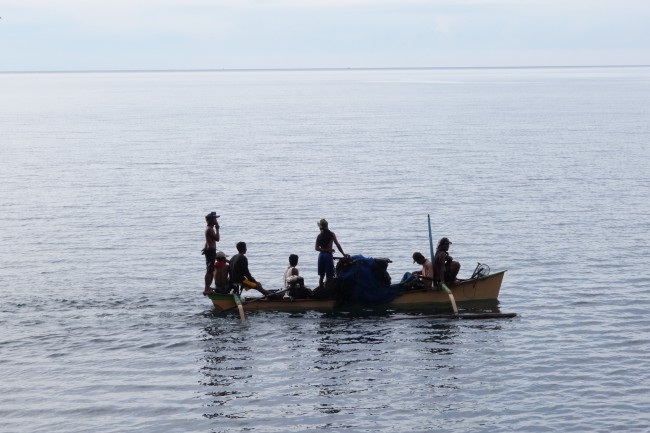 The Indonesian island of Bali hosts five million domestic and over three million foreign tourists every year. The majority of these visitors confine their stay on this beautiful and fascinating island to the popular beachfront areas of the south – Kuta, Legian, Seminyak, and Nusa Dua, all of which are within a short distance of Bali’s excellent new international airport.
The Indonesian island of Bali hosts five million domestic and over three million foreign tourists every year. The majority of these visitors confine their stay on this beautiful and fascinating island to the popular beachfront areas of the south – Kuta, Legian, Seminyak, and Nusa Dua, all of which are within a short distance of Bali’s excellent new international airport.
Walking past the bars, massage parlours, t-shirt shops, and other “tourist traps” in Kuta, for example, you will encounter almost as many Australians as you will local Balinese.
On an eight-day trip to Bali in January we also stayed, for most of our visit, in the south. We were fortunate, however, to have been given a two-night complimentary stay at the Nugraha Lovina Sea View Resort and Spa in the town of Lovina on the northern tip of Bali.
Upon our arrival in Bali from Java, we were greeted at the domestic airport by a representative of the resort, a friendly, soft-spoken young man named Arik. Arik and a driver then took us on the three-and-a-half-hour trip to the north, through the urban sprawl of the south and on into the mountainous region of the island’s centre, with its terraced rice paddies, twin lakes, and Hindu temples.
By the time we started down the other side of the mountain, it was already dark and had begun to rain, but our driver expertly handled the precarious turns and twists of the narrow road. We finally arrived in Lovina some time after eight o’clock in the evening and were greeted at the Nugraha by staff bearing scented cold towels and refreshing drinks.
The next morning we rose early and after breakfast in the Nugraha’s open-air restaurant, were picked up at the hotel by Putu, the enterprising and knowledgeable proprietor of the Mayong Village Tracking Experience. Putu drove us to his home, which is located in a rural agricultural area about twenty minutes from the hotel. From there he guided us on a five-kilometre trek through the lush landscape of terraced rice fields; through small groves of jackfruit, cashew, clove, and cacao trees, and other “exotic” flora; past villagers’ homes that ranged from the simple and rustic to the sturdy and modern.
Putu explained to us, in highly serviceable English, the philosophy of Balinese Hinduism as it applies to the daily lives of the people in his village (the majority of the population of Bali, as opposed to the rest of Indonesia, which is predominantly Muslim, is Hindu); the complex process of growing rice; the cooperative nature of farming in the region; and the many plants and smaller number of animals we encountered on our three-and-a-half-hour journey.
At the end of our trek, we were driven again to Putu’s house, where his wife Ria cooked us a healthy and delicious lunch.
The weather was stiflingly hot and humid, we were dressed utterly inappropriately, and I fell in the mud two or three times along the route, but this “tracking experience” was the highlight of our entire trip to Bali.
We spent the rest of the afternoon swimming in the lovely large pool at the Nugraha and lounging in one of the hotel’s cozy pavilions, looking out over the Bali Sea a few feet away. As the sun began to set, I noticed a small boat that had pulled in close to the beach in front of the Nugraha. The boat held nine young men, all chatting and joking and laughing as they let out a large fishing net. We watched these fishermen, clearly local to the area, cast their net, draw it in, and harvest a mere bucketful of tiny fish, all as the sun was setting over this beautiful sea. And then these nine young men started the process all over again.
The following morning, at six, we waded out to a boat floating in the waters in front of the hotel and embarked on an excursion in search of dolphins. While we watched the sun rise over the hills of Lovina and the pink morning light cross the eastern horizon of the sea, the boatman piloted the small craft to what we assumed was an area where we would enjoy a spectacular private viewing of these magical creatures. We were taken aback when, after only a few minutes putting around in this area, the boat suddenly took off in another direction. Before long it became clear that we were about to join a veritable flotilla of tourist-filled “dolphin-hunting” boats, and the excursion turned into a rather obscene chase as twenty-five determined craft bore down on the next spot at which the pilots assumed the dolphins would break the surface of the water. I could only think that if I were a dolphin, I would find this little circus highly stressful. We were relieved when the disturbing exercise ended.
For a few extra dollars, our boatman took us into shallow waters near the shore, jumped out of the boat and waded in to a small store where he bought bread. He then took us a few meters further from shore, and looking over the side of the boat into the clear water we could see dozens of small tropical fish, which happily took bits of bread from our fingers.
After breakfast, we checked out of the Nugraha, said goodbye to the manager and his staff, and were driven, again by the hotel, back down south to the island’s capital city of Denpasar. On the way we were pulled over, along with the rest of the traffic, by a man in traditional Hindu/Balinese dress. As we wondered what was going on we began to hear strains of the local music and soon it became apparent that a parade was about to pass. Our guide informed us that we had been sidelined by a funeral procession: a man had died and his body was being taken to be cremated. Neither the colours nor the music played by the “marching” band nor the people participating in the parade or lined at the side of the road appeared grief-stricken; rather, the mood appeared to be celebratory, the occasion social.
The parade passed and we were on our way again to Denpasar. After some searching and checking with local residents, we finally found our new hotel tucked away in an obscure alley somewhere in this bustling, tourist-oriented town. At the hotel, another driver was waiting to take us on our next set of adventures.
In the past year I have spent almost three months in two visits to Indonesia. I have traveled by train, by plane, and by automobile to Bandung, Jakarta, Jogjakarta, and Wonosobo, all of which are locations featuring unique natural or historical sites and/or memorable experiences. However, the north of Bali, with its natural beauty, its numerous imposing or enchanting temples, and its genuinely warm and friendly people, has been the high point of my travels in this fascinating country so far.
If you go to Bali, make an effort to get to the north. Rent a car, take a taxi or bus, hire a driver, whatever; the cost is not steep and the experience – so very different from what you will find in the south – will be well worth the few extra dollars you will spend.
And make sure you get together with Putu. Tell him Juswan and Ross sent you.
Image Credits
Photos by Juswantori Ichwan. All rights reserved.
Recent Ross Lonergan Articles:
- The Film-School Student Who Never Graduates: A Profile of Ang Lee, Part Four
- The Film-School Student Who Never Graduates: A Profile of Ang Lee, Part Three
- The Film-School Student Who Never Graduates: A Profile of Ang Lee, Part Two
- The Film-School Student Who Never Graduates: A Profile of Ang Lee, Part One
- Bullying, Fear, And The Full Moon (Part Four)








Please Share Your Thoughts - Leave A Comment!